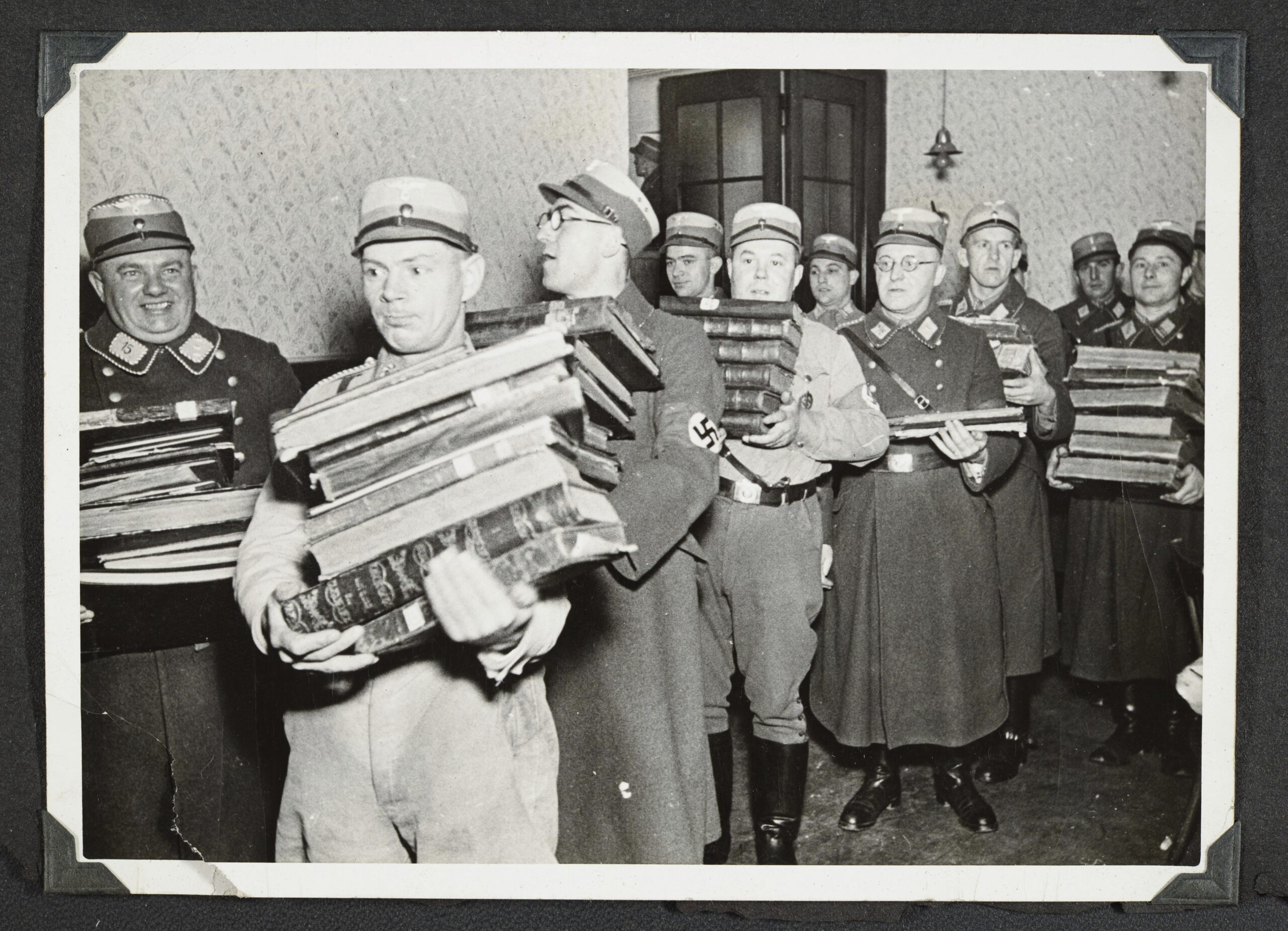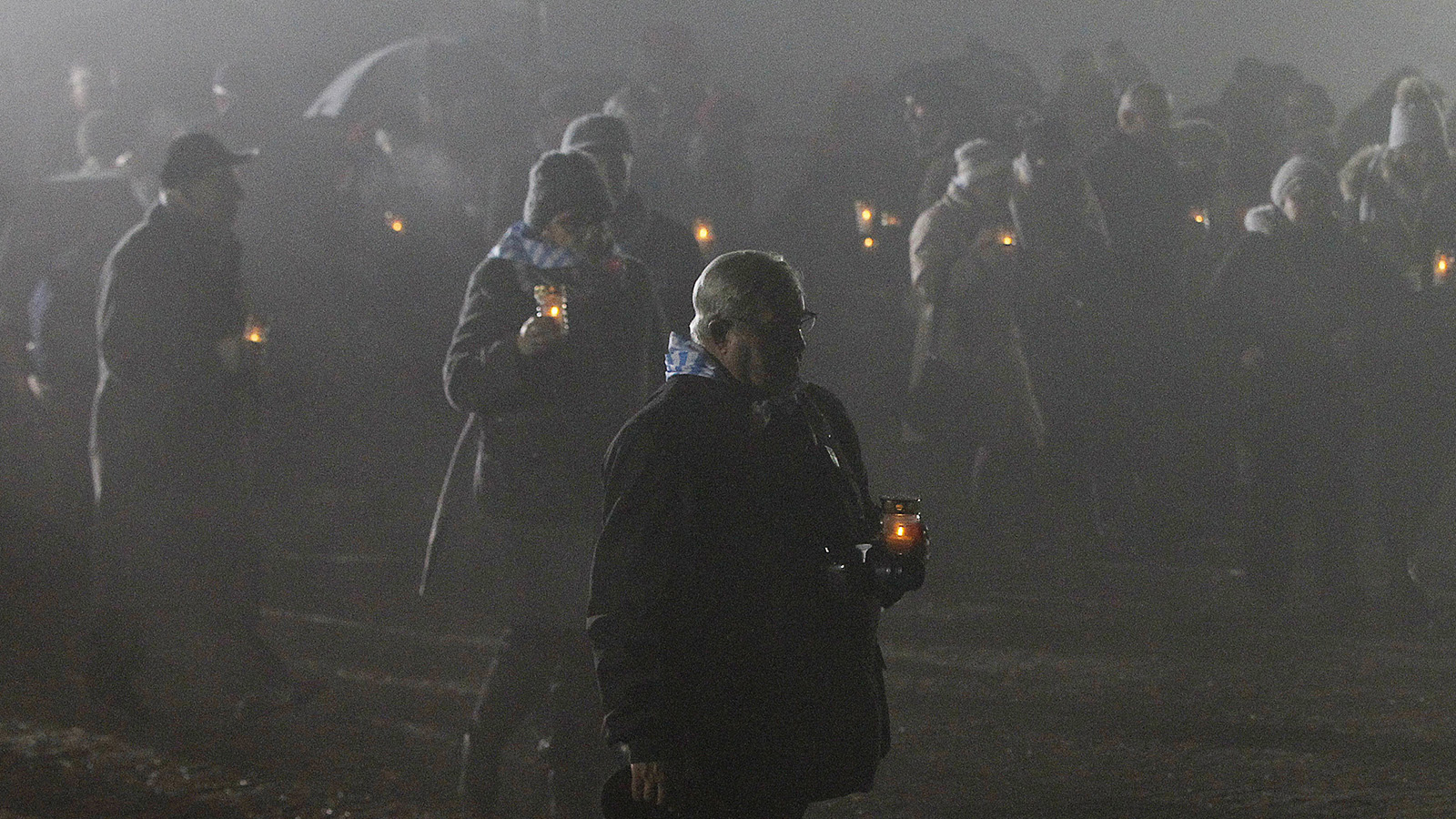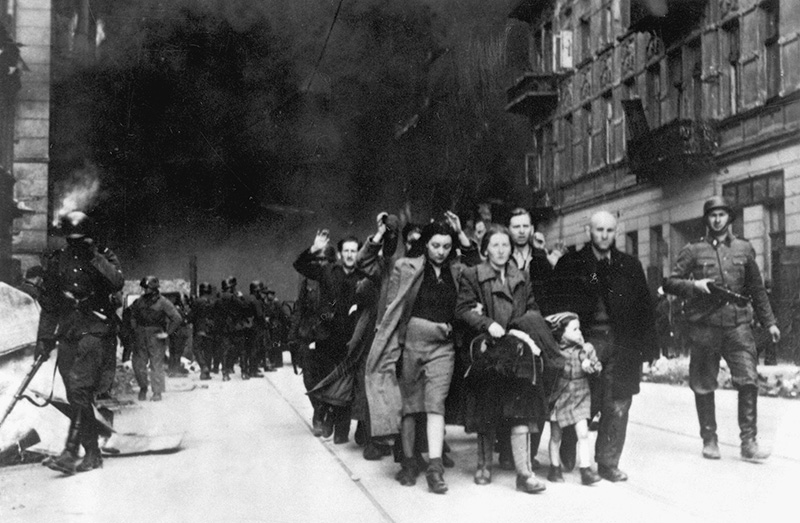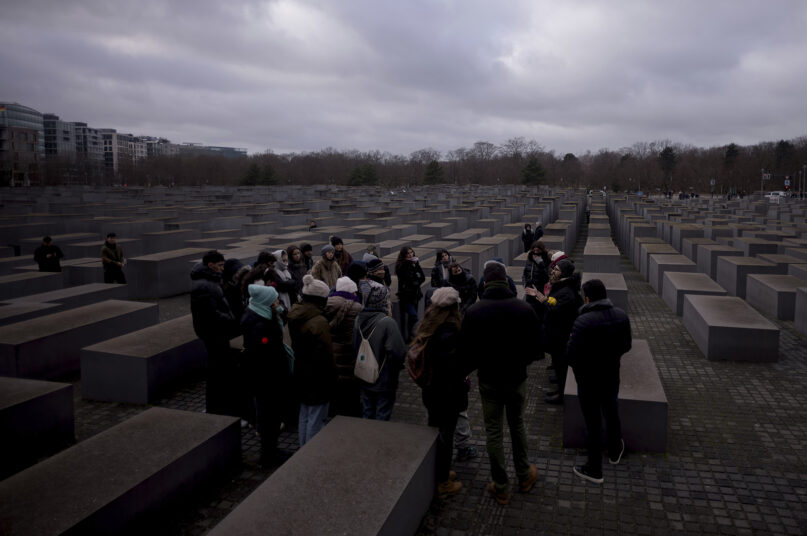(RNS) — “So, did I hear that today is some kind of Holocaust memorial day?”
A friend asked me that question this past Friday.
“Yes,” I replied. “It’s International Holocaust Remembrance Day.”
“Got it,” he said. “But, isn’t there also that day in the spring … ?”
“Yes,” I replied. “That would be Yom HaShoah.”
A respectful pause.
“And then, isn’t there also one in November?”
He was referring to the commemoration of Kristallnacht.
His implicit question hung in the air: Why do we need three Holocaust memorial days?
Why, indeed?
Let’s look at the calendar of Jewish Holocaust memory — in the order of the cycle of the Jewish year.
First: Nov. 9-10, 1938. Kristallnacht, the night of broken glass, the true beginning of mass violence against the Jews of Germany and Austria.
When Jews remember Kristallnacht, what are they remembering?
We remember that we were passive, because this is what the Nazis did to us.
It is not only what the Nazis did to the Jews. It is also what the Nazis attempted to do to Judaism itself.
The story of the night of broken glass is, yes, the story of murder and mayhem. It is the story of the destruction of Jewish homes and businesses in Germany and Austria.

This photo released by Yad Vashem, World Holocaust Remembrance Center, shows German Nazis carrying Jewish books, presumably for burning, during Kristallnacht intake most likely in the town of Fuerth, Germany, on Nov. 10, 1938. The photos were taken by Nazi photographers during the pogrom in the city of Nuremberg and the nearby town of Fuerth. They wound up in the possession of a Jewish American serviceman who served in Germany during World War II. His descendants donated the album to Yad Vashem. (Yad Vashem via AP)
But it is also the story of the burning of synagogues, the desecration of Torah scrolls, and the deliberate profanation of everything sacred in the Jewish world.
In fact, that was the point of it all.
As Alon Confino wrote in “A World Without Jews: The Nazi Imagination from Persecution to Genocide”:
The Nazis burned the Hebrew Bible on November 9 and 10, 1938. Not one copy but thousands, not in one place but in hundreds of communities across the Reich … By fire and other means, the destruction of the Book of Books was at the center of Kristallnacht, when fourteen hundred synagogues were set on fire … Shredded Torah scrolls and prayer books as well as religious objects from the altar littered the area near the synagogue. Children were mockingly marching on the shredded Torah with top hats on … In Fritzlar, a small town in Hessen where in the year 919 the Reichstag gave birth to the Holy Roman German Empire, Torah scrolls were rolled along the Nikolausstrasse as Hitler Youth rode their bicycles over them.
Second: International Holocaust Remembrance Day, Jan. 27, 1945. This was the day the Soviet Red Army (to be precise: the 60th Army of the First Ukrainian Front) liberated Auschwitz-Birkenau.
What is the implicit message of International Holocaust Remembrance Day?
It is a two-fold message.
For Jews: We remember we were passive, but this is what they (the Soviet Red Army) did for us, in liberating us.
For the international community, there is a different message.

Survivors of Auschwitz arrive at the International Monument to the Victims of Fascism at the former Nazi German concentration and extermination camp KL Auschwitz II-Birkenau on International Holocaust Remembrance Day in Oswiecim, Poland, on Jan. 27, 2018. (AP Photo/Czarek Sokolowski)
International Holocaust Remembrance Day affirms that Europe understands, fully, what befell that continent during World War Two. It understands, fully, the dangers of extremism.
When Jews say “never again!” it means this will never again happen to the Jewish people.
When Europeans say “never again!” it is a solemn prayer that this will never again happen in Europe — to anyone.
As in:
German Chancellor Olaf Scholz on Saturday called on all citizens to defend Germany’s democracy and fight antisemitism as the country marked the 79th anniversary of the liberation of the Nazi death camp Auschwitz-Birkenau during World War II.
Since 1996, Germany has also marked January 27 as a day to remember the horrors of the Holocaust.
“‘Never again’ is every day,” Scholz said in his weekly video podcast. “January 27 calls out to us: Stay visible! Stay audible! Against antisemitism, against racism, against misanthropy — and for our democracy.”
And, third: Yom HaShoah, which occurs on the 27th day of the Hebrew month of Nisan the week after Passover.
Why that date? Because we are commemorating the Warsaw Ghetto Uprising against the Nazis in April, 1943.
And, why then? Because the Nazis, as was their wont, chose Passover as the date for the liquidation of the ghetto. That was their demonic policy: to deliberately choose Jewish sacred days — days dedicated to life — for mass Jewish death. To mock those dates, to deliberately profane the holy — as they did on Kristallnacht. Throughout the Holocaust, the Nazis took special glee in torturing and tormenting visibly Orthodox Jews — cutting off their earlocks, forcing them to don tallit and tefillin before killing them.
We call it Yom HaShoah, the day of the catastrophe.
We remember we were passive, because this is what the Nazis did to us.
No, that understanding is incomplete.

Jewish civilians are led by German Nazi troops to the assembly point for deportation. Picture taken at Nowolipie street, near the intersection with Smocza during the Warsaw Ghetto Uprising in April 1943. Housing blocks burn in the background. (Photo courtesy of NARA/Creative Commons)
The full name is Yom HaShoah V’HaGevurah — the day of the catastrophe and of heroism. Despite what we have come to believe and ritualize, that day is actually less about Jewish death than it is about Jewish heroism — how Jews, mostly young Jews, haplessly and hopelessly resisted the Nazi attack on the ghetto.
So, if Kristallnacht was about what they did to us; and if International Holocaust Remembrance Day is about what they did for us, then Yom HaShoah V’HaGevurah is mostly about what we did for ourselves — that Jews will not be victims.
And, now?
It is clear to me, and others, that the horrors of Oct. 7 will remain fixed in the Jewish psyche and will therefore merit a place in the Jewish calendar.
The question is not only: How shall we remember Oct. 7?
It is: When shall we remember Oct. 7?
Let us recall that the pogrom unfolded — yes, on Shabbat; but most significantly, on Simchat Torah, the festival of the ending and beginning of the Torah.
Recall that the Nazis often chose Jewish holidays as the timing for their murderous actions against Jewish communities.
In a similar fashion, the Arab armies chose Yom Kippur as the day of attack in 1973.
In a similar fashion, top Hamas leaders chose Oct. 7 as the day of the attack — they knew the IDF’s guard would be down because of Simchat Torah.
Of the three Holocaust remembrance days, only one — Yom HaShoah v’Hagevurah — is observed according to a Hebrew date.
This is appropriate, as the Warsaw Ghetto Uprising was linked to Passover, which happens in Nisan. It is also appropriate, as this remembrance has seemed to be uniquely Jewish — observed mostly within the Jewish community.
The other two remembrances — International Holocaust Remembrance Day and Kristallnacht — are observed according to the secular calendar. This is also appropriate, because of the international and universal observance of those dates.
That is why I hope that, going forward, we will observe the pain of Oct. 7 on Oct. 7 — a fixed, “secular” date — and not on Simchat Torah, which is a movable festival according to the Jewish calendar.
Yes, Simchat Torah will never be the same. But, the Torah is a tree of life. It is a message of hope and of transcendence — precisely the message our generation needs as it moves forward from that day.
Frankly, none of us would have ever wanted to add yet another day of mourning to the Jewish calendar.
Which might be another reason for us to remember the horror on Oct. 7 itself.
For what is the Hebrew way of saying that date?
Shiva b’October — literally, the seventh of October.
But “shiva” also refers to a seven-day period of mourning.
As in: We had shiva in October.
Far more than shiva; far more than shloshim (the traditional 30-day mourning period).
That shiva is not ending — for quite some time.






